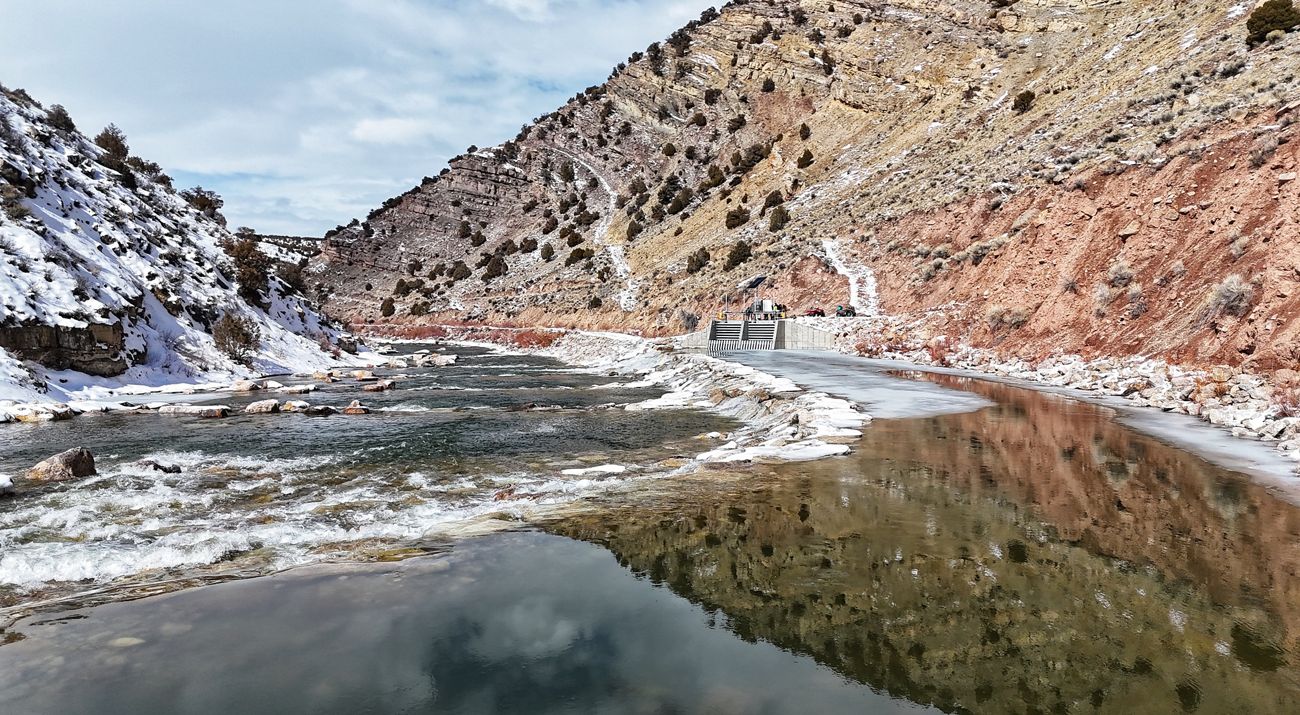Maybell Project Restores Hope for Irrigators and Endangered Fish
The Colorado River, for all its complex policies and deep-rooted history, represents a contemporary conundrum: too much demand and too little water.
A lot depends on the Yampa River in northwest Colorado. The river provides irrigation water for farming and ranching, creates habitat for fish and wildlife and supports the boating and outdoor recreators who contribute to local economies. However, drought and low flows have impacted all who rely on the river.
That's where the Maybell diversion comes in. Located west of Craig toward Dinosaur National Monument, Maybell has one of the largest irrigation diversions on the Yampa River, providing water for 18 agricultural producers through a series of lateral ditches that extend across 2,500 acres. TNC has been working with the Maybell Irrigation District since 2017 to rehabilitate the diversion and modernize the headgate. The new diversion and in-stream structures, including new headgates to the Maybell Ditch, began operating in May 2024.
Think globally, act locally
Sign up to receive monthly conservation updates and how you can get involved.
The original diversion structure, built in 1896, channeled water through a broken, antiquated headgate into the Maybell Ditch, an 18-mile canal that flows roughly in line with the river and irrigates hay pasture and ranchlands. For generations, water users had to manually operate the headgate, which required hiking over three miles and using special tools and equipment. This process meant that the water was not always used at the most opportune times for ranchers or with the most efficiency. In addition, the Maybell diversion and large rocks in the river posed challenges for both fish and recreational boat passage.


In the fall of 2023, TNC, Maybell Irrigation District, and JHL Constructors embarked on a $6.8 million project to update the Maybell diversion and headgate on the Yampa River. The project was designed to modernize infrastructure, enable remote operation of the headgate to the Ditch, and improve control of water delivery to agricultural lands.
The Maybell reach of the Yampa is home to abundant wildlife including four endangered fish species, whose free movement depends on healthy river flows. The new infrastructure will facilitate fish passage during low flows to allow movement through the diversion and throughout the Lower Yampa.
While boaters enjoy paddling through Juniper Canyon, the reach with the Maybell diversion was formerly known for hazardous conditions at high and low flows. Landslides and large boulders blocked the river, creating challenges for inexperienced boaters. The reconstructed diversion will connect two sections of floatable river with a riffle wave feature through the diversion.
Quote: Jennifer Wellman
“We are thrilled that the contractors were able to complete a substantial piece of construction this winter and we can’t wait to hear feedback from recreational boaters about their experience floating the Lower Yampa River", explains Jennifer.
As a result of this project, the Yampa will see increased ecological connectivity and resilience to climate change and the irrigators will have improved control of their irrigation system. The summer of 2024 will be the first opportunity to feel the benefits of the constructed project on irrigation, fish and boaters.
A win-win-win for people, nature and economy
The three parts of the project—replacing the headgate, improving fish and boat passage and rehabilitating the diversion—work together to improve efficiency, water flows and habitat for native fish.
The success of this project depended on finding the right contractor that was attentive to communications during construction and able to respond to the community’s needs and the interdisciplinary benefits of the project. JHL Constructors was able to overcome challenges with the remote location of the project, the need to build roads to deliver equipment to the site and the process for selecting rocks to fit perfectly into the new construction.
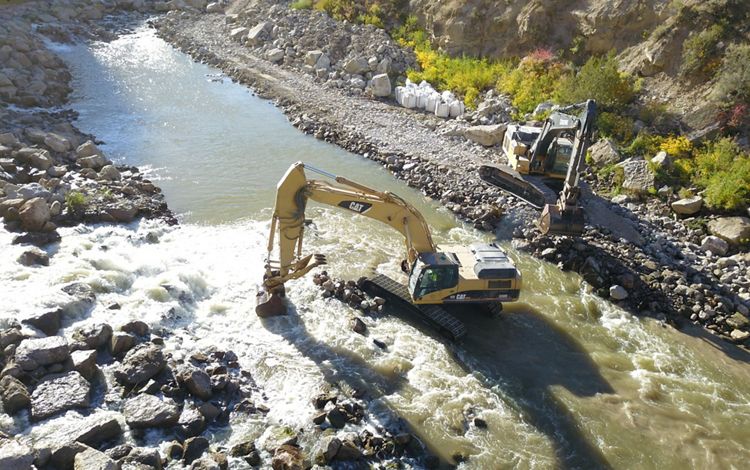
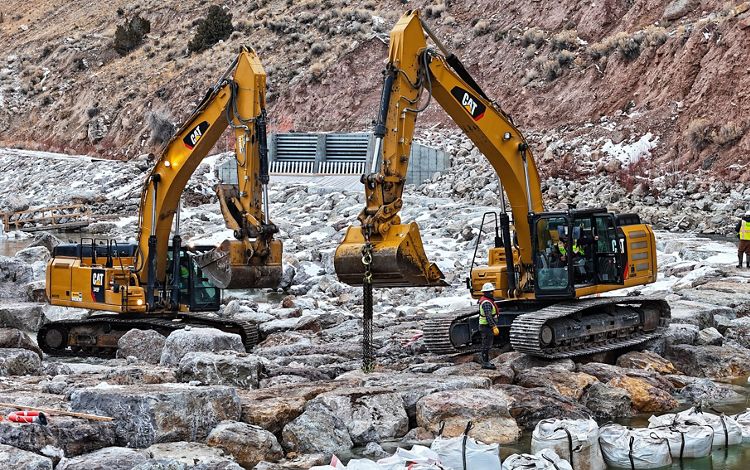
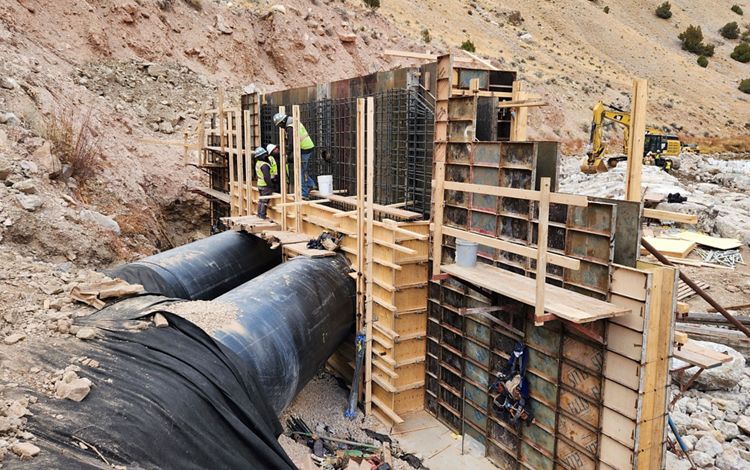
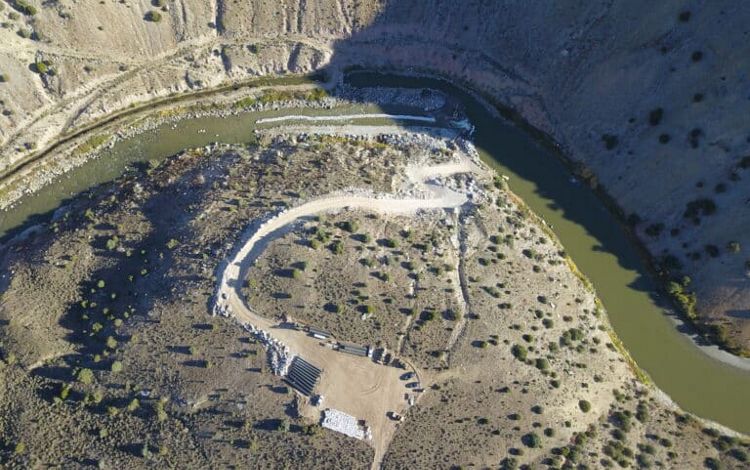
“The whole point of the project is to rebuild the headgate and make the diversion structure more accessible to the recreation folks, more fish friendly for the endangered fish and more friendly for the irrigation district, so we’re hoping this project will be a win-win for everything,” says Mike Camblin, rancher and President of Maybell Irrigation District.
The collaborators worked to combine many pots of funding from various state, federal and private sources to support the nearly $7 million effort. The lion’s share came in 2022, when the project received a $1.92 million grant from the Bureau of Reclamation’s WaterSMART program and $2.8 million from the Upper Colorado River Endangered Fish Recovery Program. The Maybell diversion is one of many projects funded by the Infrastructure Investment and Jobs Act and Bipartisan Infrastructure Law, massive federal investments that fund water infrastructure needs across the country.
A Piece of a Larger Puzzle
The success of this project is tied to the larger story of the Colorado River Basin. The Colorado River, for all its complex policies and deep-rooted history, represents a contemporary conundrum: too much demand and too little water. As our climate changes, rising temperatures and drought conditions have intensified across the Colorado River Basin. This over-appropriated river system is also seeing rapid growth in the population that relies on it. Overuse has impacted agricultural water availability, native fish and many birds and plants that rely on streamside habitat and the river itself.
As rivers throughout the basin are being stretched to a breaking point, the 30 native fish species that are found nowhere else in the world face an increasingly uncertain future. These waters also feed habitat that supports an amazing array of the West’s wildlife.
While one large irrigation ditch in northwest Colorado may seem like a drop in the bucket, its story provides hope for the whole system. Bringing together agricultural, recreational and environmental interests is necessary if we hope to see positive change for this river system.
Quote: Mike Camblin
I think if we all work together, we can come to a solution. If we don’t do that, then the next generation might not have the water they need.
Problems like these can seem daunting from a bird’s eye view. Solutions must come from within the communities themselves, and through many innovative, thoughtful collaborations along the way.
